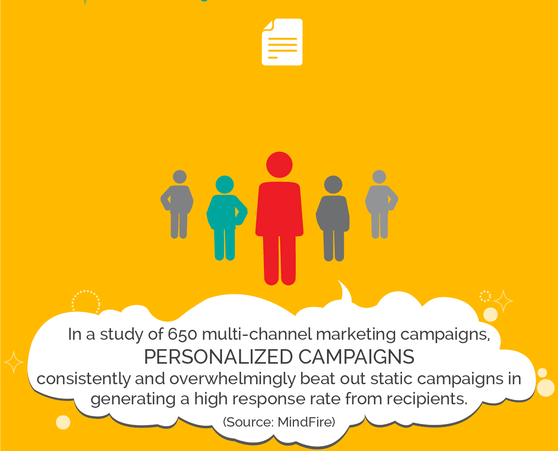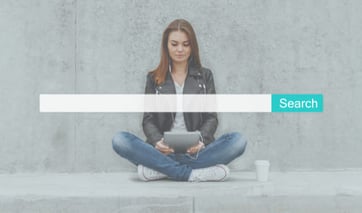It's 2015 and personalization is on everybody's mind. For consumers, it's about products and services that cater to an exact need, as if they were created specifically for an individual. The flip side is that the onus for developing these personalized items is on brands and businesses that are already battling it out for consumer attention.
The good news is that as advanced as personalization is in some areas (targeted ads based on interests and online behaviour), it's still in its infancy in other, equally important ways. For example, when I first bought somebody a bottle of Coke with their name on the logo, it was kinda cool. And while I don't doubt that the campaign was a huge, global success, how much effort did it really take on Coke's part? Is the fact that they replaced their logo with some text true personalization or just a gimmick?
If it sounds like I'm saying the Share-A-Coke thing is both brilliant and only fractionally personalized, that's because it's exactly what I'm saying. So that's why for our latest infoGIF (a new creation from our amazing design team) we came up with some stats and facts to show you just how up close and personal your customers want you to get!
![[InfoGIF] The Open-And-Shut Case For Personalization](https://www.wsiworld.com/hs-fs/hubfs/Imported_Blog_Media/Mar2015Infographic_BuildBrandAuthority-1-4.gif?width=625&height=706&name=Mar2015Infographic_BuildBrandAuthority-1-4.gif)
Last year, we talked about personalization in our discussion of Spike Jonze's film Her as it relates to the future of mobile marketing. In the movie, the products and services depicted are created to get to know their owners in a matter of seconds (and to then assist them in the day-to-day activities). More recently, Dan Monaghan brought up Minority Report and the all-access data pass we give to apps and devices when we talked to him during the first episode of the Digital Insider Podcast Series.
Both of these topics adopted a somewhat negative perspective on how personal technology is becoming (albeit in part due to the heavy conclusions drawn by both films). Overall, this stands in contrast to what we found when we jumped into data on the results of personalization, which is that consumers actually appreciate when marketers use their data correctly. And it makes sense. After all, when was the last time you got mad at Netflix for suggesting a totally awesome movie that you'd never even heard of?
When you consider how helpful and efficient personalized marketing is for consumers, it's no surprise that studies have shown 1:1 campaigns beat out static campaigns in an overwhelming fashion. Think about the places you go during your weekly routine, like your favorite coffee shop, local grocery store or the gas station near your house. Do you see the same employees over and over? Have they tuned into your regular habits (the drink you order or the fact that you always buy a lottery ticket with your gas)? These small but meaningful human connections that occur in our daily lives are the kind of personalizations that smart marketers are making in their digital campaigns.
![[InfoGIF] The Open-And-Shut Case For Personalization](https://www.wsiworld.com/hs-fs/hubfs/Imported_Blog_Media/Mar2015Infographic_BuildBrandAuthority-2-4.gif?width=625&height=525&name=Mar2015Infographic_BuildBrandAuthority-2-4.gif)
In keeping with the mobile marketing theme, we came across a survey that found 40% of consumers buy more often from retailers who personalize the shopping experience across all channels and devices. These stats shed light on how fast technology is moving (and how important it is for marketers and their strategies to move right along with it). Right now, we're still talking about multiple channels and ways to consistently present personalized marketing on various devices. But how far are we from the omnichannel and is that what we should ultimately be preparing for? It's hard to predict the future (although we can certainly try), but it's always a good idea to keep your eye on the digital horizon.
![[InfoGIF] The Open-And-Shut Case For Personalization](https://www.wsiworld.com/hs-fs/hubfs/Imported_Blog_Media/Mar2015Infographic_BuildBrandAuthority-3-4.gif?width=625&height=453&name=Mar2015Infographic_BuildBrandAuthority-3-4.gif)
Marketing personalization has come so far that you are now pissing off your customers if you don't know anything about them. 74% of online customers get frustrated when websites deliver offers, ads and promotions that aren't relevant to their interests. I know two things: a) three-quarters of any study is a heck of a lot of tilt in one direction and b) angry customers don't make purchases. So what's the moral of the story? Ignore personalization and real connection with your customers at your own very high risk!
![[InfoGIF] The Open-And-Shut Case For Personalization](https://www.wsiworld.com/hs-fs/hubfs/Imported_Blog_Media/Mar2015Infographic_BuildBrandAuthority-4-4.gif?width=625&height=489&name=Mar2015Infographic_BuildBrandAuthority-4-4.gif)
In the highly public realm of the Internet, privacy is definitely an issue, so it makes sense that 77% of consumers would trust businesses if they explained how they use personal information to improve digital experiences. It's natural - the more you know, the safer you feel. Of all the stats we found for this infoGIF, this one is the most problematic. We're all for transparency and disclosure, but there are no easy ways to make privacy policies seem interesting. There are ways, but they require more creativity; nothing good comes easy though, right? Think of it as an opportunity: if you can figure out how to get customers to give you more of their data, you'll jump way ahead of the competition.
![[InfoGIF] The Open-And-Shut Case For Personalization](https://www.wsiworld.com/hs-fs/hubfs/Imported_Blog_Media/Mar2015Infographic_BuildBrandAuthority-5-4.gif?width=625&height=493&name=Mar2015Infographic_BuildBrandAuthority-5-4.gif)
Huh, we've answered our own question (because we like talking to ourselves like that). But if 62% of adults under the age of 34 are willing to share their location for more relevant content, then why aren't we betting all the marbles on that? Give the people what they want (just in case we aren't using enough GIFs in this post).
But seriously, if all it takes is a little give in the relationship, marketers need to be all over that. It also represents the human element we're going for, so it's a win for everybody.
![[InfoGIF] The Open-And-Shut Case For Personalization](https://www.wsiworld.com/hs-fs/hubfs/Imported_Blog_Media/Mar2015Infographic_BuildBrandAuthority-6-4.gif?width=625&height=509&name=Mar2015Infographic_BuildBrandAuthority-6-4.gif)
When cold-calling was all the rage in the sales world, getting on the phone with the decision-maker was always an important part of the process. The same goes for content marketing, as studies have shown that among the most successful marketers, 71% tailor content to the persona of the decision-maker. It requires more work to a) identify the decision-maker and then b) create a person for them, but it's totally worth it if it helps you make the sale or develop a brand advocate.
![[InfoGIF] The Open-And-Shut Case For Personalization](https://www.wsiworld.com/hs-fs/hubfs/Imported_Blog_Media/Mar2015Infographic_BuildBrandAuthority-7-4.gif?width=625&height=389&name=Mar2015Infographic_BuildBrandAuthority-7-4.gif)
With that, we've reached the end of our infoGIF (we were hoping there was more, too). I want to once again shout out to the design team for an incredible job this month, and if you're lovin' it as much as we are, go ahead and share it or write about it - we'd really appreciate it!
![[InfoGIF] The Open-And-Shut Case For Personalization](https://www.wsiworld.com/hs-fs/hubfs/Imported_Blog_Media/Mar2015Infographic_BuildBrandAuthority-Full-4.gif?width=625&height=3670&name=Mar2015Infographic_BuildBrandAuthority-Full-4.gif)






